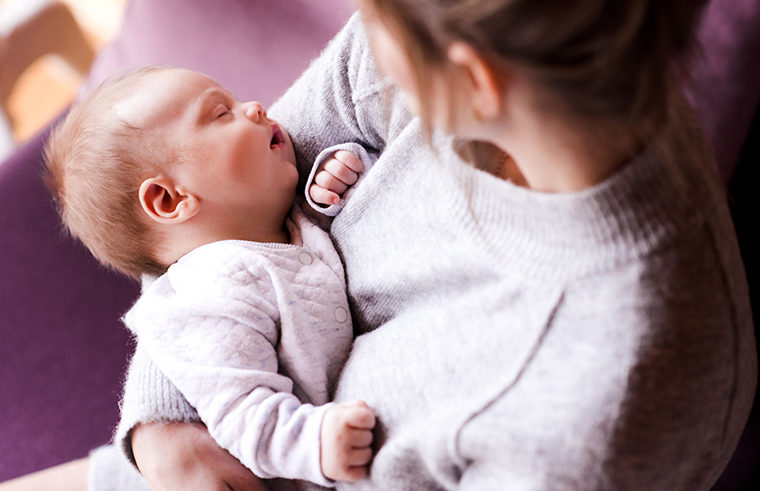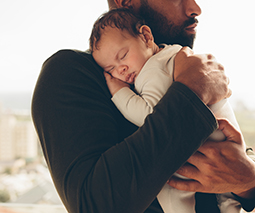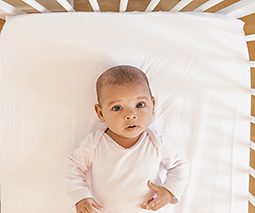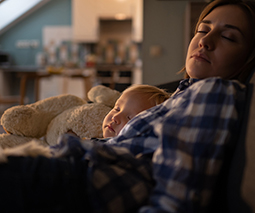Robin Barker on why the controlled crying myth is out of control

There are many normal developmental, emotional and physical reasons why babies and toddlers have disrupted sleep.
By six months 60-70 percent of babies are ‘sleeping through the night’. Sleep patterns, however, can – and do – change at the drop of a hat, sometimes for obvious reasons but more often than not for reasons that appear to defy rationality.
The normal individual range of babies’ sleeping and waking patterns varies considerably and often bears no relation to what and how babies are fed, being too hot or cold, lonely, over-stimulated, teething or any of the plethora of concrete reasons offered up to parents.
If the routine sleep hassles experienced by parents reliably responded to these ‘solutions’, sleep problems would be non-existent. Baby advisors would not spend hours each working day talking about ‘sleep’. Waiting times at parent and baby centres would disappear.
What are routine sleep hassles?
Routine sleep hassles refer to the normal night waking that is common among healthy, well-fed, well-cared for babies in good homes. It is important to draw a clear line between normal night waking, and irregular sleep patterns caused by illness, defined medical conditions, neglect or emotional/psychological disruptions.
What is controlled crying?
Originating in the United Kingdom in the 1970s, controlled crying (CC) is a plan for parents to follow to assist older babies and toddlers to get themselves off to sleep after a normal brief waking period instead of requiring an external aid (rocking, patting, dummy, breast/bottle-feed, taken to the parent’s bed etc). Parents are told to remove all external aids and respond to their baby’s crying by briefly comforting them and returning at increasing time intervals until the baby goes to sleep.
This technique was viewed as being more humane for both babies and parents, rather than leaving babies to cry-it-out, which was the standard advice for exhausted parents in the first half of last century.
During the 1980s when there was a swing away from routines some parents and health professionals started objecting to strategies that encouraged parents to leave their babies to cry to teach them to sleep.
Their objections centred on the belief that CC techniques could potentially cause long-lasting harm. This belief was/is based on selective information related to infant mental health as well as on attachment theories and causes of emotional and psychological stress in children. There are, however, no studies that show long-term harm solely related to using standard sleep training techniques in healthy older babies and toddlers in good homes.
Critics of CC use extreme examples of emotional deprivation to support their claims of harm by citing examples from the world of the abnormal which bear little relationship to much-loved babies in good homes, for example severely neglected babies in Romanian orphanages. Critics also misuse research to support their claims of harm. (For more details click here.)
The claims by anti-CC advocates that CC is ‘normalised abuse’ that could – in theory at least – lead to brain damage or schizophrenia as well as their other inflammatory rhetoric, resulted in a flurry of name changes as health professionals in the business of helping queues of distressed sleep-deprived parents strove to distance themselves from ‘controlled-crying’ by calling it something else.
CC thus morphed into comfort settling, controlled comforting, responsive settling, progressive waiting, camping out, sleep training and so forth. ‘Sleep training’ appears to be the favoured term at the moment and there are now many variations on the sleep training theme and an array of regimes ranging from simple to complicated.

Options for broken nights after the first six months
Options are limited and despite the multitude of variations there are only three; changing or learning to live with a baby/toddler’s night-time sleep patterns always involves one of the following:
- Sleep training (withdrawing attention)
Leaving baby/toddler to his own devices by following a sleep training regime. - Live with it (continued attention)
Co-sleeping is the main strategy here; other suggestions include a three-sided cot adjoining the bed, parent sleeping with baby/toddler in her room, going to the baby and patting him to sleep, pretending to ignore, minimal attention, bottles of water instead of milk, free breastfeeding, alternating ‘nights on’ with partner, re-organising daytime sleeps, sitting by her bed until she goes to sleep, a night-light.Note that these are not separate options but, all part of option 2. - A sedative (the cop-out often suggested by anti-sleep training advocates)
Will not change the sleep behaviour and it’s risky, especially for long-term use.

A few important sleep training details
- Sleep training is a technique for healthy older babies and toddlers, not newborns nor – generally – during the first six months.
- It is used to modify night-waking. In my hands-on experience, it is nearly always a painful, pointless exercise for day-time sleeping and early-morning waking.
- The ideal age is 9-12 months. The longer toddlers co-sleep and get attention throughout the night the harder and more painful it is to change things. Generally, by the time toddlerhood is well advanced it’s probably a better option to leave things be.
- Sleep training doesn’t always work. Good results may not necessarily be permanent. For an optimum response, parents need
proper guidance from an informed health professional. - Sleep training is a reasonable option for exhausted parents who wish to change things. It has nothing to do with discipline or ‘spoiling’.
- It’s crucial for the parents to work out whether or not their baby/toddler’s night sleep patterns are a problem or not. If everyone is happy there is no need to do anything.
Remember: Sleep hassles are normal
Routine sleep hassles are part of raising babies and toddlers. In the past, more parents seemed to accept this and had the confidence to deal with it in whatever way they thought best for their particular circumstances.
Once, the notion of paying thousands of dollars for an outsider to come into the home to sort out normal sleep hassles was unthinkable. Thanks to the scare tactics of the anti-sleep training brigade the intensity of parental anxiety about ‘sleep’ – a practical not a moral issue – has reached unprecedented levels.
This post was originally published on Kinderling Kids Radio. Download the Kinderling app for more great stories.
 Join the Bump and Baby: The Fourth Trimester online event! With live expert sessions, FREE newborn routine guide & the chance to WIN a $500 Nursery gift voucher. Click here to find out more and make sure you don’t miss a thing!
Join the Bump and Baby: The Fourth Trimester online event! With live expert sessions, FREE newborn routine guide & the chance to WIN a $500 Nursery gift voucher. Click here to find out more and make sure you don’t miss a thing!









